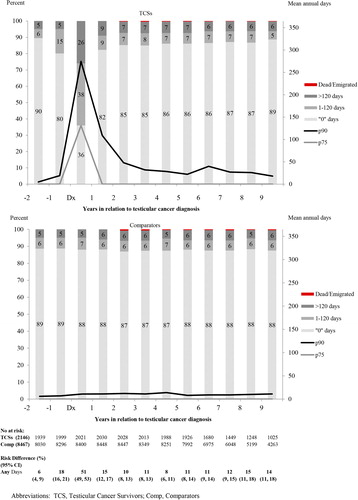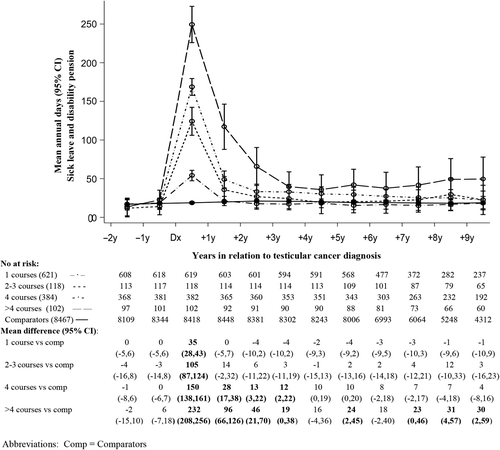Figures & data
Table I. Characteristics of testicular cancer survivors (TCSs) diagnosed in Sweden 2000–2007 (seminoma) or 1995–2007 (non-seminoma), and male population comparators matched to the patients by age and calendar year of diagnosis.

Table II. Relative risk (RR) and 95% confidence intervals (CI) of annual sick-leave or disability pension among TCSs compared with matched population comparators in the 3rd and 5th year after diagnosis. First, patients are grouped by tumor subtype and clinical stage (CS) and second by treatment modality. Follow-up is censored at relapse.
Table III. Mean days of sick-leave or disability pension among TCSs and population comparators (Comp) in the 3rd and 5th years after diagnosis. Patients are stratified by no or limited treatment versus extensive treatment, and then further by age, calendar period, educational level and previous sick-leave or disability pension. Follow-up is censored at relapse.

